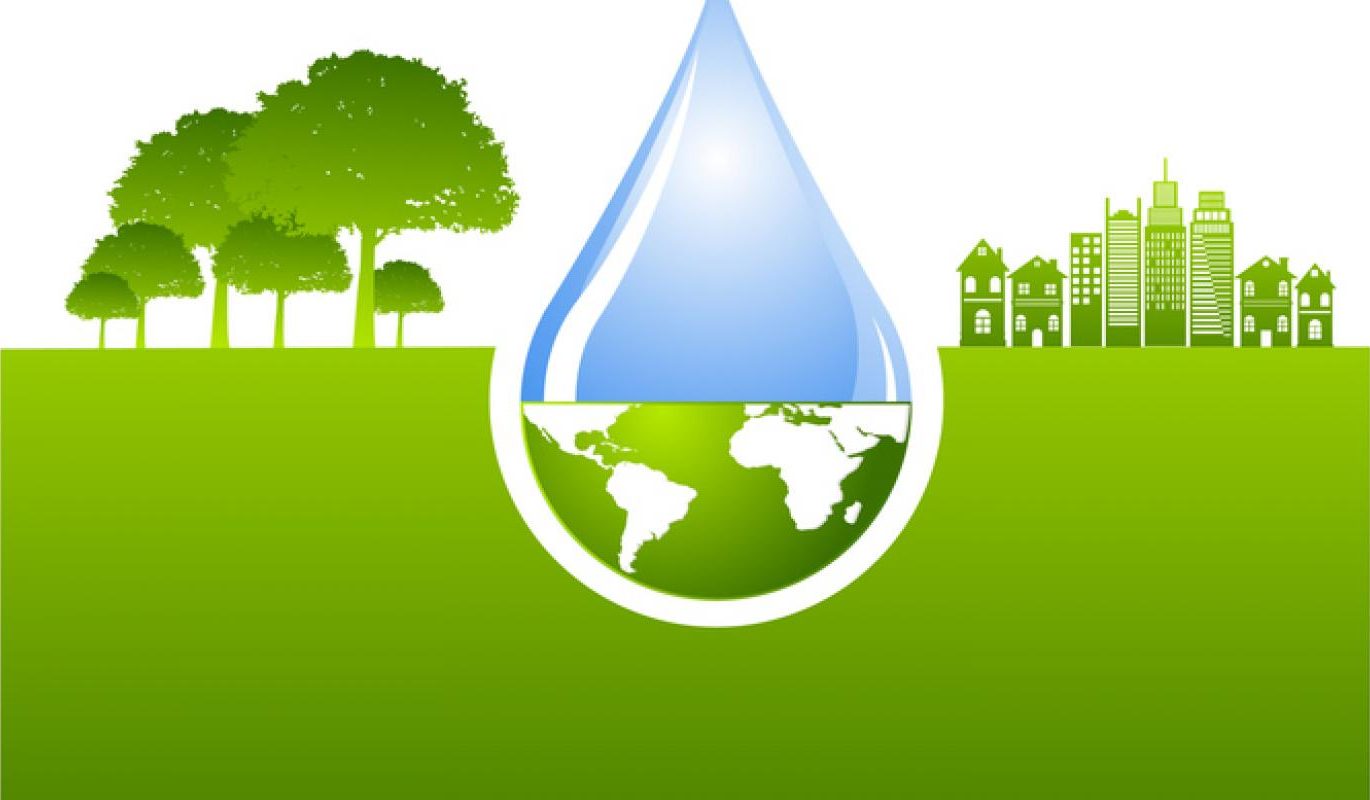

A study on Chennai’s water usage and recommendations on sustainable water management.
Water is a precious, non-substitutable resource that sustains life on our planet. And yet, its misuse and depletion are almost universal. Of the many factors that impact water availability and the cadence of water cycles, the most significant are water management, usage patterns and urban development. Water management, not just its sources but also storage, supply infrastructure and treatment, is thus becoming increasingly important, especially in heavily urbanised environments across India.
The severity of water challenges is rising globally. Considering the real estate industry, water is a critical resource from the product lifecycle perspective, be it at the construction stage (preparation of mortar, mixing of cement, concrete and curing work, etc.) or during the occupancy stage. Regular availability of good water is essential for occupants of residences. Water quality and availability in a rapidly urbanising India are at significant risk, making it imperative for us to use water judiciously.
Mahindra Lifespaces’ water strategy for future-readiness includes the development of mitigation measures across regions and businesses. Some of these strategies begin with implementation during the design stage and continue into monitoring consumption during construction and occupancy. These include rainwater harvesting; STPs; low-flow water fixtures, water recycling and reuse. At our integrated cities and industrial clusters, wastewater is treated via onsite STP. Last year, across projects, we recycled and reused 11 lakh kilolitres of water in our industrial developments. Through our company’s initiatives to improve water quality, wastewater treatment and safe reuse of water, we have realised10.34 m3 annual savings and Rs 1,854 revenue per kilolitre of water consumed.*
Water-related interventions at Mahindra Lifespaces over the years have helped us realise over 248.2 million litres of water savings to date.
Moreover, recognising the urgency of the water situation across urban India, this World Environment Day 2021, the Mahindra-TERI Centre of Excellence (CoE) – a joint research initiative of Mahindra Lifespaces and The Energy and Resources Institute (TERI) that focuses on green building solutions customised to Indian climates – launched a report on the future of water availability and the impacts of various social and industrial factors on water usage across the Chennai Metropolitan Area. The report aims to create awareness of the present and future water challenges facing stakeholder communities across Chennai and recommends action to secure water sustainability in the city. With Chennai’s water requirement expected to reach 2,236.5 MLD (million litres/day) by 2025 – from 2,074 MLD in 2019, the capacity enhancement of water treatment plants needs to be increased to 2348.3 MLD by 2025, along with many other critical measures to mitigate the imminent shortage.
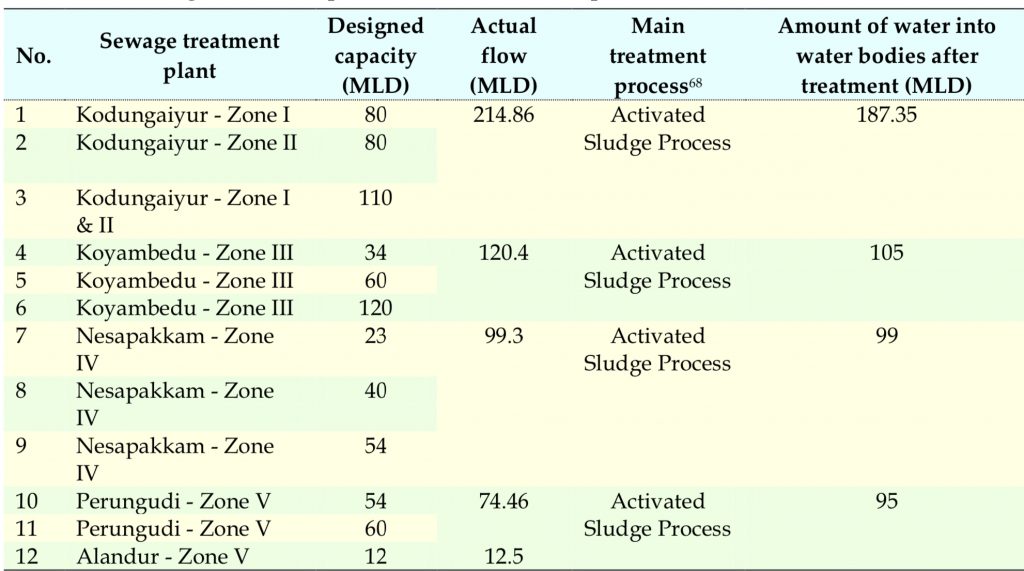
Water management and scope
The study was conducted across the Chennai Metropolitan Area (CMA) under the jurisdiction of the Chennai Metropolitan Development Authority, including both urban and rural parts of CMA.
It points to the fact that water use and management are influenced by water governance. This refers to who gets what kind of water, when and how they get supply, etc. It also identifies those who have the right to water and related services and their benefits. It determines the equity and efficiency in water resource and services allocation and distribution and balances water use between socio-economic activities and ecosystems.
There are potential risks in water management currently that indicate possible threats to the urban water cycle and the demand and supply of water within CMA.
The issues, interconnected with each other on projections for the year 2025, starting from water availability and its allocation to capacities of water and sewage treatment plants, need to be addressed urgently.
Land management and impact on water
The built-up area in CMA has grown almost three times, from 211.2 sqm. in 1988 to 578.3 sqm. in 2017. The built-up area has spread out radially towards the West, with Chennai district as a nucleus. Between 1988 and 1997, the region saw a high rate of urban sprawl, and it continued to expand until 2006, with scattered settlements being converted to dense settlements. Up until 2017, the rise in the built-up area could be attributed to a large chunk of the population settling in CMA. It is estimated that if this urban growth trend continues, the built-up area will reach 708.3 km2 by 2025.
Other land types like wasteland and dump yards also saw a significant increase from 1988 to 2006. By 2017, the water bodies/wetland area had shrunk to almost half of its size in1997 (from 117 km2 to 55 km2). CMA is likely to experience a continuous built-up expansion due to rapid economic development. The resulting population growth is expected to result in increased demand for housing and civic amenities like water supply.
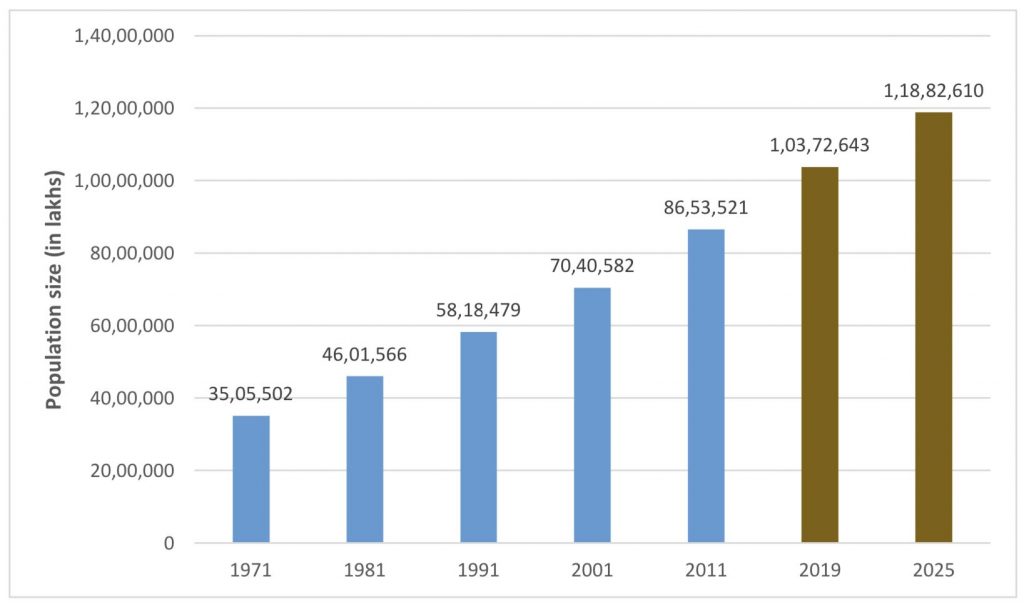
CMA has witnessed a rapid increase in population since its formation in 1974. The population is estimated to reach 1,18,82,610 in 2025, considering the existing rate of decadal change in population (from 2001 to 2011).
Existing water bodies and usage
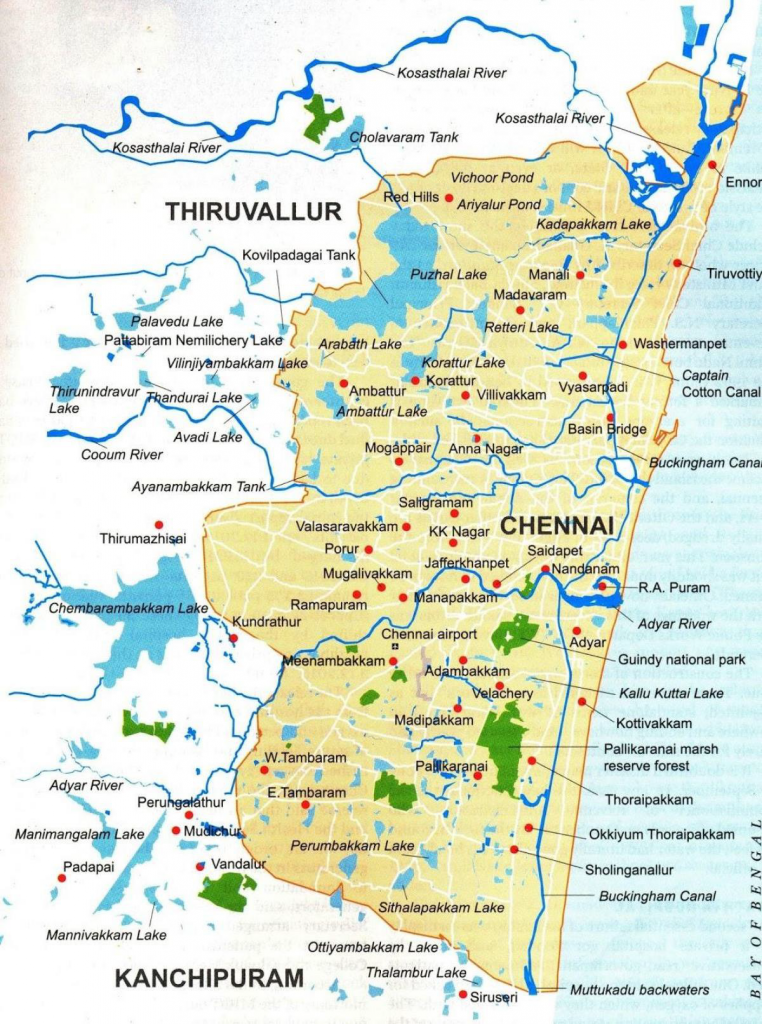
Water bodies like ponds, lakes and rivers could continue to shrink due to encroachments, unauthorised constructions and poor disposal of municipal and industrial waste. The flood intensity during the monsoons is expected to increase in CMA due to the reduction in the catchment area, with shrinking water bodies and green cover and expansion in built-up land.
To fulfil the increasing demand for water in CMA, several sources are being tapped to source and distribute water to the region. CMA receives its water from four main sources: surface water, rainwater, seawater and groundwater. Of these four sources, ground aquifers have been the most important source of water supply to Chennai, although currently, surface water is the most used source.
To meet the various types of water demand across the city, the water stored in the reservoirs requires infrastructure for a safe and continuous supply to the end-user. To meet the minimum water quality standards, water treatment plants are installed where the water tapped from the reservoirs is treated and then supplied to the city.
The infrastructure for transporting wastewater comprises 5200 km of sewer lines and 1894 km of open drains, mainly carrying domestic wastewater and stormwater. Open drains are mostly unlined, and wastewater flows under gravity towards the sink. The sewerage network comprises pipes of reinforced concrete cement (RCC) with diameters varying from 250 mm to 2500 mm. Currently, 98 per cent of Chennai’s area has a sewerage network. Chennai has a total of 12 STPs spread over five zones.
Natural and human impacts on water availability
The region is likely to experience a staggered rainfall pattern over the coming years due to the rapidly changing climate, thus making it difficult to predict rainfall intensity and period. This, along with decreasing groundwater holding capacity and rainwater mismanagement, could affect the water storage capacity in the reservoirs as well.
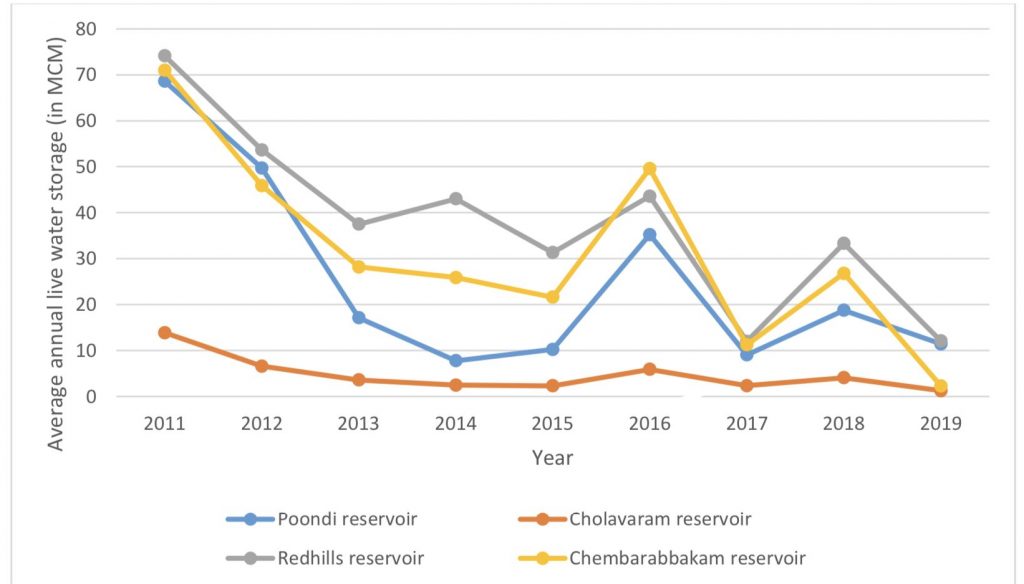
Overexploitation of groundwater sources to meet the growing water demand has resulted in depleting water table of well fields located in CMA. If the built-up expansion is not controlled and water flow is not properly managed, groundwater levels and quality will continue to decline.
Sustainable water use in habitats is one of the key areas of research of The Mahindra-TERI Centre of Excellence (CoE), which aims to develop science-based solutions for India’s built environment.
The report follows a unique, integrated, ‘One Water’ methodology that incorporates multiple aspects of water systems – such as stormwater, wastewater, and water supply networks – to recommend best practices for holistic urban water management.
Water conservation and management must be made a priority across all residential and industrial development projects in India. Current climate change and population growth trends indicate that by 2025, the inhabitants of Chennai could be faced with multiple water crises. Compounded by extreme weather events and developmental activities, it is projected to result in widespread flooding, pollution, and a shortage of potable water. This report on ‘Water Sustainability Assessment of Chennai Metropolitan Area’ aims to provide a way forward to overcome these challenges to sensitise all stakeholders, including citizens, on water sustainability.
Key report findings:
- Considering the current urban growth trend in Chennai, the city’s built-up area is estimated to increase to 708.3 km2 in 2025, or thrice the area in 1997. At the same time, the city’s water bodies are expected to shrink to 38.4 km2 by 2025, or one-third of their coverage in 1997.
- The region is expected to experience an unpredictable rainfall pattern rainfall over the coming years due to changing climate, extreme El Nino conditions, and continuous warming of the Bay of Bengal off the Tamil Nadu coast, thus making it difficult to predict the rainfall intensity and period. This could also lead to fluctuations in the water storage capacity in the reservoirs throughout the year.
- Chennai faces a significant risk of pollution of its natural waterways. The quantity of wastewater generated in Chennai is estimated to increase to 1,789.2 MLD by 2025.
| Year | 2019 | 2025 |
| STP capacity required | 727 MLD | 1878.6 MLD |
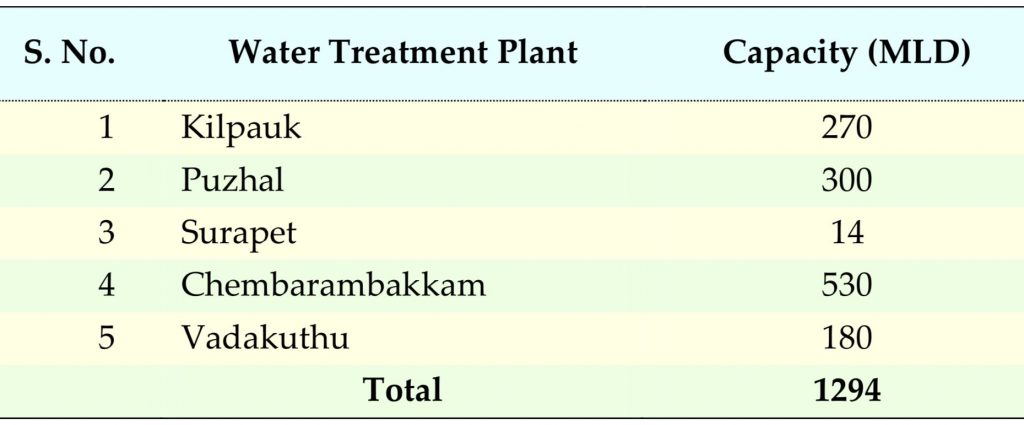
Key report recommendations for sustainable water management in CMA:
- Propagation and adoption of water conservation practices such as rainwater harvesting, wastewater recycling and reuse, to meet the rising water demand due to rapid demographic changes.
- Developing policies and designing measures towards protecting the region’s ecosystems to strengthen both natural and urban water flow systems.
- Identifying and filling up data gaps related to groundwater availability, extraction and use by conducting detailed surveys.
- Strengthening the water governance structure and administration; establishing a transparent and participatory mechanism through capacity building and training programmes.
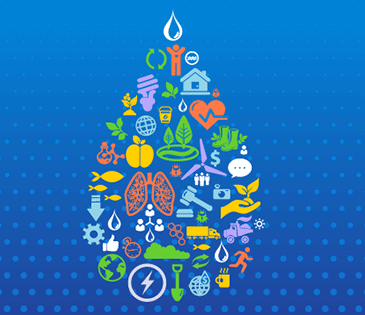 Water is a common resource and of the commons. Understanding water cycles is critical to achieving a holistic solution to the water challenge. Conflicting stakeholder interests and the inability to de-risk through appropriate nature-based solutions have increasingly distanced the common man from water security. Continued undervaluation of this vital resource can lead to serious challenges across India. It is urgent and imperative to adopt a collaborative stakeholder engagement approach to manage interests and design solutions in the same water shed.
Water is a common resource and of the commons. Understanding water cycles is critical to achieving a holistic solution to the water challenge. Conflicting stakeholder interests and the inability to de-risk through appropriate nature-based solutions have increasingly distanced the common man from water security. Continued undervaluation of this vital resource can lead to serious challenges across India. It is urgent and imperative to adopt a collaborative stakeholder engagement approach to manage interests and design solutions in the same water shed.
Sunita Purushottam is Head – Sustainability at Mahindra Lifespace Developers Limited.
*[AJ1] From SDG Framework for Sustainability Report 2019-20

